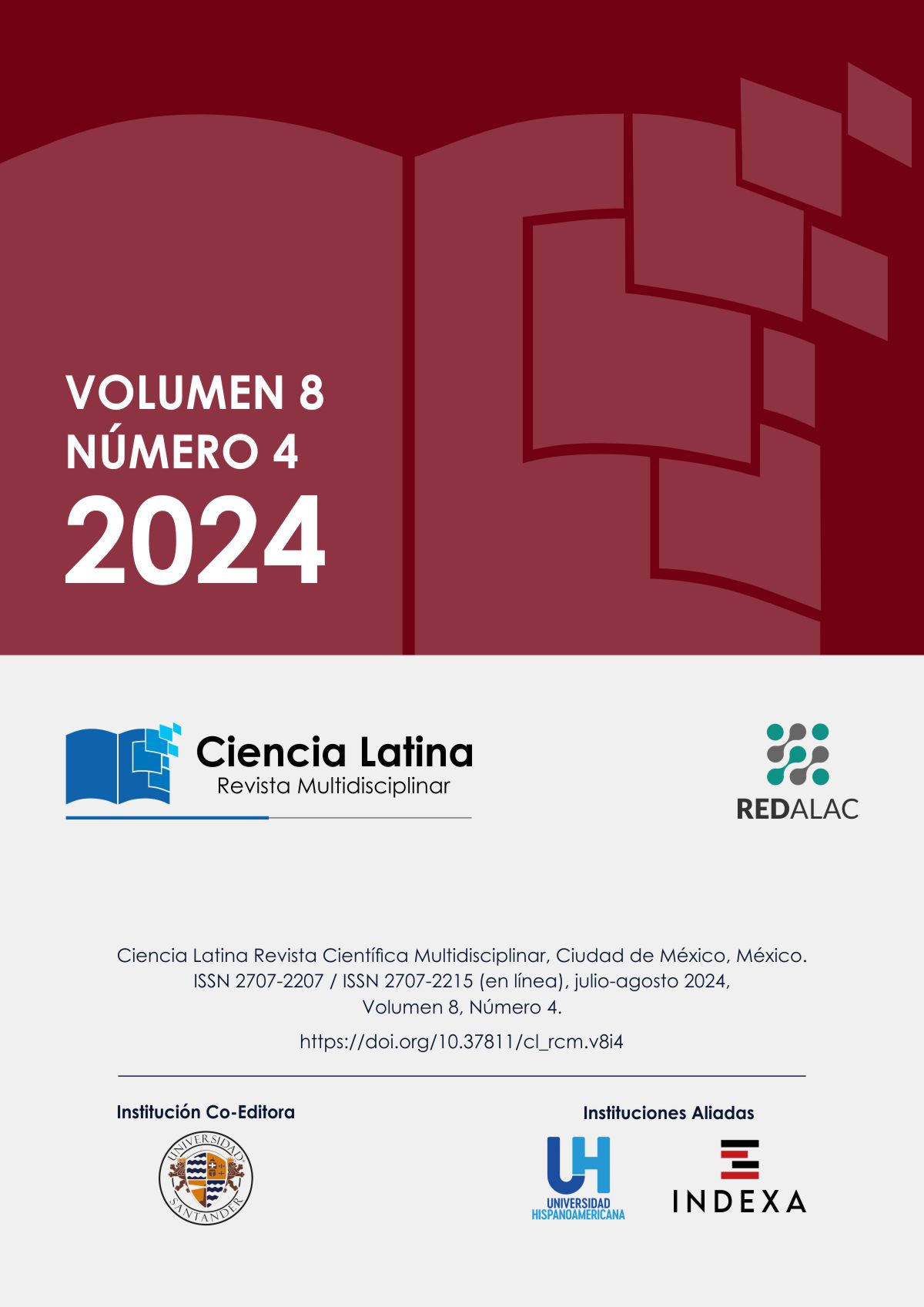Consideraciones Anestésicas en Intervenciones Quirúrgicas Urológicas
Resumen
La anestesia en el área urológica se utiliza tanto en la cirugia vía laparoscópica y mínimamente invasiva como en las más complejas, para lo cual previa consulta preoperatoria anestésica se puede generar un anestésico apropiado para el procedimiento, En la toma de decisiones debe considerarse los aspectos clínicos individuales de cada paciente uno de los más importantes datos a considerar es el diagnóstico y edad. Dentro de los abordajes quirúrgicos y las anestesias investigadas, la anestesia raquídea se perfila como una opción con potenciales beneficios en la supervivencia, efectos menos inmunosupresores, su capacidad para evitar complicaciones y en la actualidad se la emplea mucho en cirugías oncológica gracias a su asociación con una menor tasa de recurrencia y una supervivencia libre de recurrencia más prolongada en comparación con la anestesia general y demás.
Descargas
Citas
Aghamohammadi, D., Gargari, R., Fakhari, S., Bilehjani, E., & Poorsadegh, S. (2018). Classic versus Inguinal Approach for Obturator Nerve Block in Transurethral Resection of Bladder Cancer under Spinal Anesthesia: A Randomized Controlled Trial. Iranian journal of medical sciences, 43(1), 75-80. Obtenido de https://pubmed.ncbi.nlm.nih.gov/29398755/
Ahn, S., Byun, S., Chang, H., Koo, Y., & Kim, J. (2016). Effect of recruitment maneuver on arterial oxygenation in patients undergoing robot-assisted laparoscopic prostatectomy with intraoperative 15 cmH2O positive end expiratory pressure. Korean journal of anesthesiology, 69(6), 592-598. doi:https://doi.org/10.4097/kjae.2016.69.6.592
Awad, H., Santilli, S., Ohr, M., Roth, A., Yan, W., Fernandez, S., . . . Patel, V. (2009). The effects of steep trendelenburg positioning on intraocular pressure during robotic radical prostatectomy. Anesthesia and analgesia, 109(2), 713-478. doi:https://doi.org/10.1213/ane.0b013e3181a9098f
Bolat, D., Aydogdu, O., Tekgul, Z., Polat, S., Yonguc, T., Bozkurt, I., . . . Okur, O. (2015). Impact of nerve stimulator-guided obturator nerve block on the short-term outcomes and complications of transurethral resection of bladder tumour: A prospective randomized controlled study. Canadian Urological Association journal, 9(11), 780-784. doi: https://doi.org/10.5489/cuaj.3149
Campero, J., Guzmán, S., Kerbebe, M., & Mercado, A. (2018). Cirugía laparoscópica en urología: breve reseña histórica y estado actual del arte. Revista Médica Clínica Las Condes, 29(2), 169-179. doi: https://www.elsevier.es/es-revista-revista-medica-clinica-las-condes-202-articulo-cirugia-laparoscopica-urologia-breve-resena-S0716864018300348
Cesur, M., Erdem, A., Alici, H., Yapanoglu, T., Yuksek, M., & Aksoy, Y. (2008). The role of succinylcholine in the prevention of the obturator nerve reflex during transurethral resection of bladder tumors. Saudi medical journal, 29(5), 668-671. Obtenido de https://pubmed.ncbi.nlm.nih.gov/18454211/
Choi, W., Baek, S., Joo, E., Yoon, S., Kim, E., Hong, B., . . . Kim, Y. (2017). Comparison of the effect of spinal anesthesia and general anesthesia on 5-year tumor recurrence rates after transurethral resection of bladder tumors. Oncotarget, 8(50), 87667-87674. doi: https://doi.org/10.18632/oncotarget.21034
Choquet, O., Capdevila, X., Bennourine, K., Feugeas, J., Bringuier-Branchereau, S., & Manelli, J. (2005). A new inguinal approach for the obturator nerve block: anatomical and randomized clinical studies. Anesthesiology, 103(6), 1238-1245. doi: https://doi.org/10.1097/00000542-200512000-00020
Cuvas, O., Er, A., Ongen, E., & Basar, H. (2008). Spinal anesthesia for transurethral resection operations: bupivacaine versus levobupivacaine. Minerva anestesiologica, 74(12), 697-701. Obtenido de https://pubmed.ncbi.nlm.nih.gov/19034249/
Cybulski, P., Joo, H., & Honey, R. (2004). Ureteroscopy: anesthetic considerations. The Urologic clinics of North America, 31(1), 43. doi: https://doi.org/10.1016/S0094-0143(03)00087-9
Dagli, R., Dadali, M., Emir, L., Bagbanci, S., & Ates, H. (2019). Comparison of Classic and Inguinal Obturator Nerve Blocks Applied for Preventing Adductor Muscle Contractions in Bladder Tumor Surgeries: A Prospective Randomized Trial. Urology journal, 16(1), 62-66. doi: https://doi.org/10.22037/uj.v0i0.4176
Demirel, I., Ozer, A., Bayar, M., & Erhan, O. (2012). TURP syndrome and severe hyponatremia under general anaesthesia. BMJ case reports, 2012. doi: https://doi.org/10.1136/bcr-2012-006899
Falabella, A., Moore-Jeffries, E., Sullivan, M., Nelson, R., & Lew, M. (2007). Cardiac function during steep Trendelenburg position and CO2 pneumoperitoneum for robotic-assisted prostatectomy: a trans-oesophageal Doppler probe study. The international journal of medical robotics + computer assisted surgery : MRCAS, 3(4), 312-315. doi: https://doi.org/10.1002/rcs.165
Gainsburg, D. (2012). Anesthetic concerns for robotic-assisted laparoscopic radical prostatectomy. Minerva anestesiologica, 78(5), 596-604. Obtenido de https://pubmed.ncbi.nlm.nih.gov/22415437/
Giri, S., & Sarkar, D. (2012). Current status of robotic surgery. The Indian journal of surgery, 74(3), 242-247. doi: https://doi.org/10.1007/s12262-012-0595-4
Gupta, K., Mehta, Y., Sarin Jolly, A., & Khanna, S. (2012). Anaesthesia for robotic gynaecological surgery. Anaesthesia and intensive care, 40(4), 614-621. doi: https://doi.org/10.1177/0310057X1204000406
Hahn, R. (2006). Fluid absorption in endoscopic surgery. British journal of anaesthesia, 96(1), 8-20. doi:https://doi.org/10.1093/bja/aei279
Hu, H., Qin, B., He, D., Lu, Y., Zhao, Z., Zhang, J., . . . Wang, S. (2015). Regional versus General Anesthesia for Percutaneous Nephrolithotomy: A Meta-Analysis. PloS one, 10(5). doi: https://doi.org/10.1371/journal.pone.0126587
Jang, D., Lim, C., Shin, Y., Ko, Y., Park, S., Song, S., & Kim, B. (2016). A comparison of regional and general anesthesia effects on 5 year survival and cancer recurrence after transurethral resection of the bladder tumor: a retrospective analysis. BMC anesthesiology, 16, 16. doi: https://doi.org/10.1186/s12871-016-0181-6
Jo, Y., Choi, E., & Kil, H. (2011). Comparison of the success rate of inguinal approach with classical pubic approach for obturator nerve block in patients undergoing TURB. Korean journal of anesthesiology,, 61(2), 143-147. doi: https://doi.org/10.4097/kjae.2011.61.2.143
Kalmar, A., Foubert, L., Hendrickx, J., Mottrie, A., Absalom, A., Mortier, E., & Struys, M. (2010). Influence of steep Trendelenburg position and CO(2) pneumoperitoneum on cardiovascular, cerebrovascular, and respiratory homeostasis during robotic prostatectomy. British journal of anaesthesia, 104(4), 433-439. doi: https://doi.org/10.1093/bja/aeq018
Kanazi, G., Aouad, M., Jabbour-Khoury, S., Al Jazzar, M., Alameddine, M., Al-Yaman, R., . . . Baraka, A. (2006). Effect of low-dose dexmedetomidine or clonidine on the characteristics of bupivacaine spinal block. Acta anaesthesiologica Scandinavica, 50(2), 222-227. doi: https://doi.org/10.1111/j.1399-6576.2006.00919
Kim, W., Hahm, T., Kim, J., Sim, W., Choi, D., Lee, E., & Lee, S. (2013). Prolonged inspiratory time produces better gas exchange in patients undergoing laparoscopic surgery: A randomised trial. Acta anaesthesiologica Scandinavica, 57(5), 613-622. doi: https://doi.org/10.1111/aas.12104
Kluth, L., Xylinas, E., Rieken, M., El Ghouayel, M., Sun, M., Karakiewicz, P., . . . Shariat, S. (2014). Impact of peri-operative blood transfusion on the outcomes of patients undergoing radical cystectomy for urothelial carcinoma of the bladder. BJU international,, 113(3), 393-398. doi: https://doi.org/10.1111/bju.12439
Koo, C., Chung, S., Kim, B., Min, B., Lee, S., Oh, A., . . . Ryu, J. (2019). Comparison between the effects of deep and moderate neuromuscular blockade during transurethral resection of bladder tumor on endoscopic surgical condition and recovery profile: a prospective, randomized, and controlled trial. World journal of urology, 37(2), 359-365. doi:
https://doi.org/10.1007/s00345-018-2398-0
Koumpan, Y., Jaeger, M., Mizubuti, G., Tanzola, R., Jain, K., Hosier, G., . . . Siemens, D. (2018). Spinal Anesthesia is Associated with Lower Recurrence Rates after Resection of Nonmuscle Invasive Bladder Cancer. The Journal of urology, 199(4), 940-946. doi: https://doi.org/10.1016/j.juro.2017.11.064
Lee, H., Kim, K., Jeong, J., Shim, J., & Cho, E. (2013). Optimal positive end-expiratory pressure during robot-assisted laparoscopic radical prostatectomy. Korean journal of anesthesiology, 65(3), 244-250. doi: https://doi.org/10.4097/kjae.2013.65.3.244
Lee, J. (2014). Anesthetic considerations for robotic surgery. Korean journal of anesthesiology, 66(1), 3-11. doi: https://doi.org/10.4097/kjae.2014.66.1.3
Lee, Y., Muchhal, K., Chan, C., & Cheung, A. (2005). Levobupivacaine and fentanyl for spinal anaesthesia: a randomized trial. European journal of anaesthesiology, 22(12), 899-903. doi: https://doi.org/10.1017/S0265021505001523
Malik, I., & Wadhwa, R. (2016). Percutaneous Nephrolithotomy: Current Clinical Opinions and Anesthesiologists Perspective. Anesthesiology research and practice. doi: https://doi.org/10.1155/2016/9036872
Mavrocordatos, P., Bissonnette, B., & Ravussin, P. (2000). Effects of neck position and head elevation on intracranial pressure in anaesthetized neurosurgical patients: preliminary results. Journal of neurosurgical anesthesiology, 12(1), 10-14. doi:
https://doi.org/10.1097/00008506-200001000-00003
Novara, G. L., Kungulli, A., Gandaglia, G., Ficarra, V., & Mottrie, A. (2016). Robot-assisted partial nephrectomy. nternational journal of surgery, 36, 554-559. doi: https://doi.org/10.1016/j.ijsu.2016.05.073
Piegeler, T., Votta-Velis, E., Liu, G., Place, A., Schwartz, D., Beck-Schimmer, B., . . . Borgeat, A. (2012). Antimetastatic potential of amide-linked local anesthetics: inhibition of lung adenocarcinoma cell migration and inflammatory Src signaling independent of sodium channel blockade. Anesthesiology, 117(3), 548-559. doi: https://doi.org/10.1097/ALN.0b013e3182661977
Seo, I. (2015). Urologic robotic surgery in Korea: past and present. Korean journal of urology, 56(8), 546-552. doi: https://doi.org/10.4111/kju.2015.56.8.546
Shah, J., Vyas, A., & Vyas, D. (2014). The History of Robotics in Surgical Specialties. American journal of robotic surgery, 1(1), 12-20. doi: https://doi.org/10.1166/ajrs.2014.1006
Shin, H., Lee, H., & Na, H. (2019). The effect of a mixture of 2.7% sorbitol-0.54% mannitol solution on blood coagulation: an invitro, observational healthyvolunteer study using rotational thromboelastometry. Korean journal of anesthesiology, 72(2), 143-149. doi: https://doi.org/10.4097/kja.d.18.00163
Srivastava, A., Singh, K., Suri, A., Dubey, D., Kumar, A., Kapoor, R., . . . Jain, S. (2005). Vascular complications after percutaneous nephrolithotomy: are there any predictive factors? Urology, 66(1), 38-40. doi: https://doi.org/10.1016/j.urology.2005.02.010
Sui, W., Onyeji, I., Matulay, J., James, M., Theofanides, M., Wenske, S., & DeCastro, G. (2016). Perioperative blood transfusion in radical cystectomy: Analysis of the National Surgical Quality Improvement Program database. International journal of urology : official journal of the Japanese Urological Association, 23(9), 745-750. doi: https://doi.org/10.1111/iju.13152
Tavare, A., Perry, N., Benzonana, L., Takata, M., & Ma, D. (2012). Cancer recurrence after surgery: direct and indirect effects of anesthetic agents. International journal of cancer, 130(6), 1237-1250. doi: https://doi.org/10.1002/ijc.26448
Taylor, E., Miller, J., Chi, T., & Stoller, M. (2012). Complications associated with percutaneous nephrolithotomy. Translational andrology and urology, 1(4), 223-228. doi: https://doi.org/10.3978/j.issn.2223-4683.2012.12.01
Thierry, T., Rozier, R., & Roaucoules-Aimé, M. (2021). Anestesia en cirugía urológica del adulto. EMC - Anestesia-Reanimación, 47(3), 1-17. doi: https://doi.org/10.1016/S1280-4703(21)45388-0
Volosky, L. (2016). Preoperative Evaluation in Urological Surgery. Revista Chilena de Urología, 81(3), 38-44. Obtenido de https://revistasacademicas.cl/Upload/ArticulosPdf/schu_20211216062054_37893f67-f9af-413c-8023-5cf0c23474ce.pdf
Wada, H., Seki, S., Takahashi, T., Kawarabayashi, N., Higuchi, H., Habu, Y., . . . Kazama, T. (2001). Combined spinal and general anesthesia attenuates liver metastasis by preserving TH1/TH2 cytokine balance. Anesthesiology, 106(3), 499-506. doi:
https://doi.org/10.1097/00000542-200703000-00014
Weber, E., Colyer, M., Lesser, R., & Subramanian, P. (2007). Posterior ischemic optic neuropathy after minimally invasive prostatectomy. Journal of neuro-ophthalmology : the official journal of the North American Neuro-Ophthalmology Society, 27(4), 285-287. doi: https://doi.org/10.1097/WNO.0b013e31815b9f67
Zimmer, A., Greul, F., & Meißner, W. (2013). Schmerztherapie in der Urologie. Der Urologe. Ausg. A, 52(4), 585-597. doi: https://doi.org/10.1007/s00120-013-3164-y
Derechos de autor 2024 Alisson Nicole Salavarría Tutivén, Byron Fabián Pinos Reyes , Dayana Paola Vasquez Armijos, Briggitte Joselyne Chalén Perero, Kevin Joel Santander Chenche, Alexander Hernández Alfonso Machala

Esta obra está bajo licencia internacional Creative Commons Reconocimiento 4.0.













.png)




















.png)
1.png)


